709-218-7927 The Landfall Garden House 60 Canon Bayley Road CANADA A0C 1B0 |
|---|
Vermicomposting in the Cold-Climate Apartment - Demonstration
Sunday, September 05, 2010
So I found a discarded pop bottle, slightly taller and slimmer than the usual 2-liter bottle.
I cut off the base around the thick band.
Hang on to all the white caps. They will become pieces in a draughts/checkers set.
I need three pieces of wire coat hanger, about twelve inches long.
I use the pliers to fashion them into S-hooks.
Here is the vermicomposter hanging from the picture rail for now.
I screw on the cap and charge the bottle with shredded paper then add water and leave it to soak.
Draining this will be easy!
And it was. I hung it from the cupboard over the sink for 30 minutes.
Then back to the separator table.
I harvested about two dozen worms, one teaspoon at a time, and with them came some material.
There will not be enough material to keep them happy, so Iíll add a cup full later today and let them settle down.
And the medi-cal cat food bag? It is foil-lined, so I figure that cloaking my green plastic bottle in the bag will shield most of the light.
Worms dislike light.
Friday, September 17, 2010
I inspected the bottle this morning. The worms are visible through the side of the bottle, although they donít show up clearly in this photo, or the next.
What can be seen are the wet castings scattered (nice one, Chris!) around the bottle, evidence that the worms are digesting something, and excreting.
The next time I set up a demonstration like this I will try to place a 1-sheet cylinder of paper around the inside of the bottle, so that any visible work activity will show up as breaks in the paper.
Friday, October 08, 2010
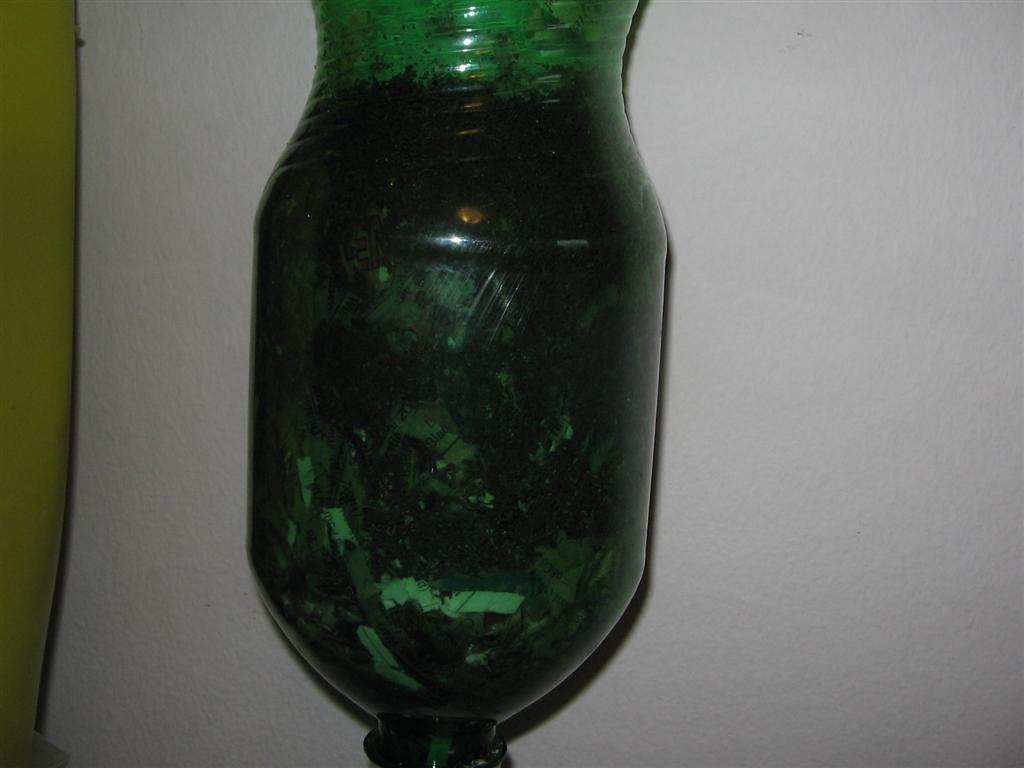
This morning most of the paper bedding around the bottle has disappeared. I donít know whatís happening on the inside, or core, of the material.
Also it is not clear to me that the paper on the outside has been consumed. It might just have been pushed inwards as the worms excrete around the outside layer.
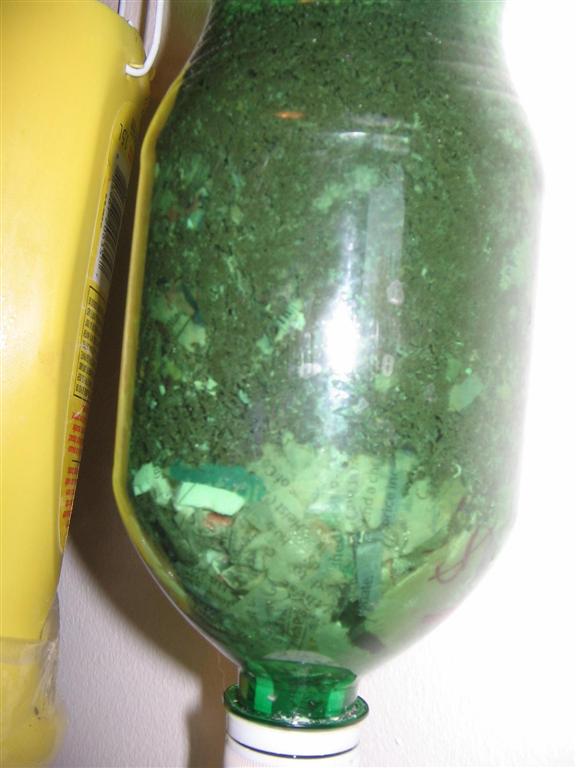
Here is, I think, a better shot of the state of decomposition.
About Ĺ a cup of tea has leaked out through the bottle cap and been collected in the bag.
Monday, October 18, 2010
The castings are clearly visible all the way to the bottom (neck) of the bottle.
Look closely and you can see a worm doing-its-thing horizontally about an inch above the line of the white bottle-cap, just below the shred of paper that reads ďof tabĒ, and another worm, doing-its-thing vertically to the left.
Not much is happening here, although there may be a few more castings in the bag.
My current theory is that we wonít see much castings activity until
(1) The material is dried out and
(2) The material is pretty well consumed of rotting matter.
Here is a more general view of the green bottle.
Sunday, November 28, 2010
After 12 weeks I decided to terminate the experiment by exploring the contents of the green pop bottle.
I found results similar to those of my Castings Separator .
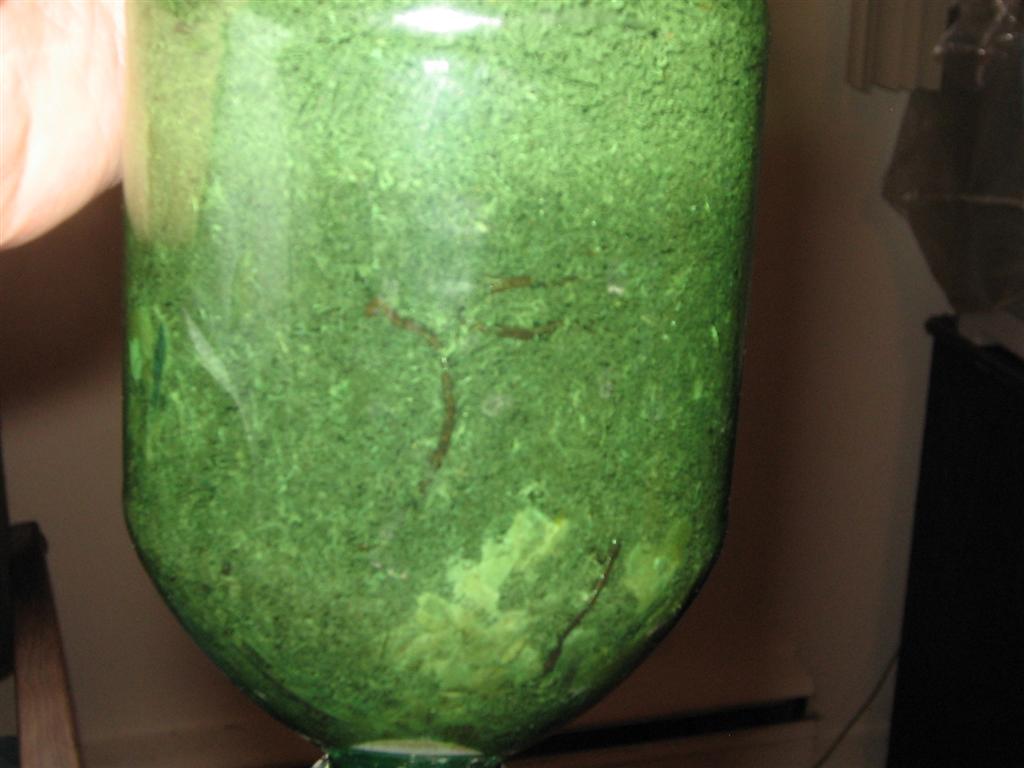
Here is a shot of the side of the bottle. As usual, worms can be seen crawling the walls. (ďCrawallingĒ?)
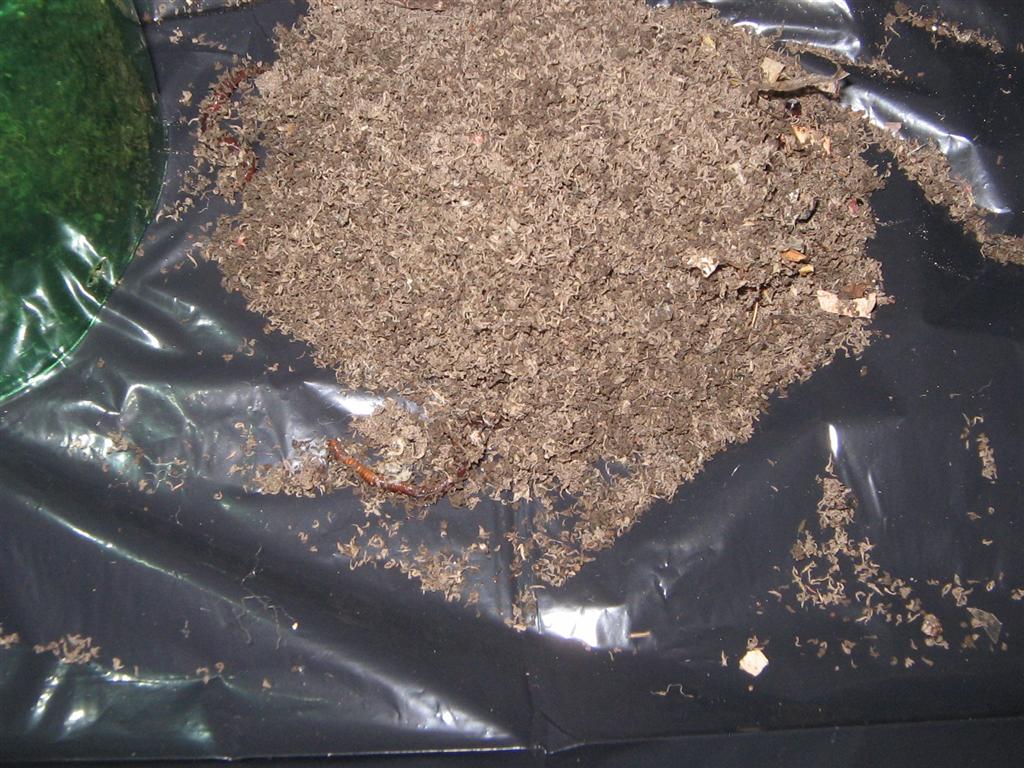
The contents were about half extremely-dried-out material and half moist. The lower half was moist. Thatís a worm that got jostled during the emptying process; Iím sure it wouldnít like to spend much time in the dry castings.
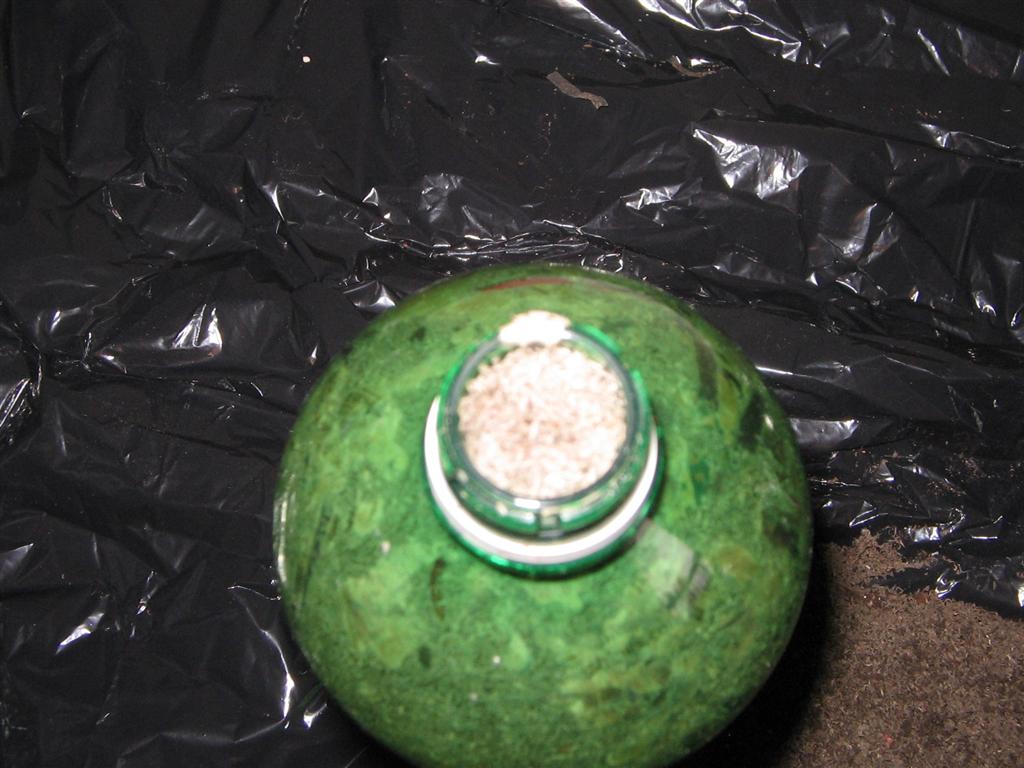
Here is a poor shot of the neck of the bottle, usually at the lower end.
Conclusion
What did I learn?
A regular 2-liter pop bottle can make a great little laboratory for a 2-month or 3-month experiment.
In particular a set of them can serve as test beds for a variety of food scrap mixtures to check on the rates of consumption by a fixed population of worms.
Loading
709 218 7927 CPRGreaves@gmail.com
Bonavista, Wednesday, June 03, 2020 11:06 AM
Copyright © 1996-2020 Chris Greaves. All Rights Reserved.